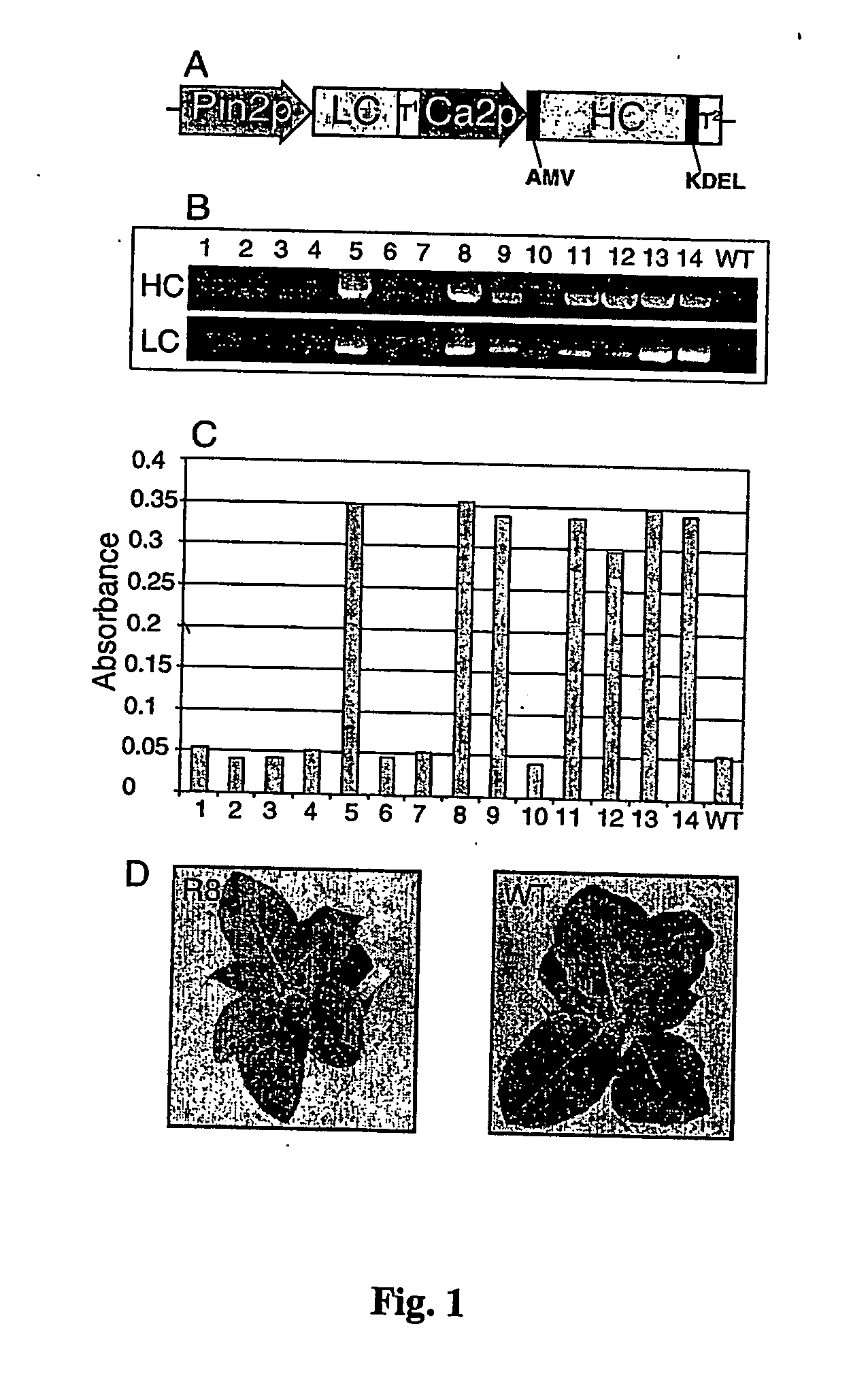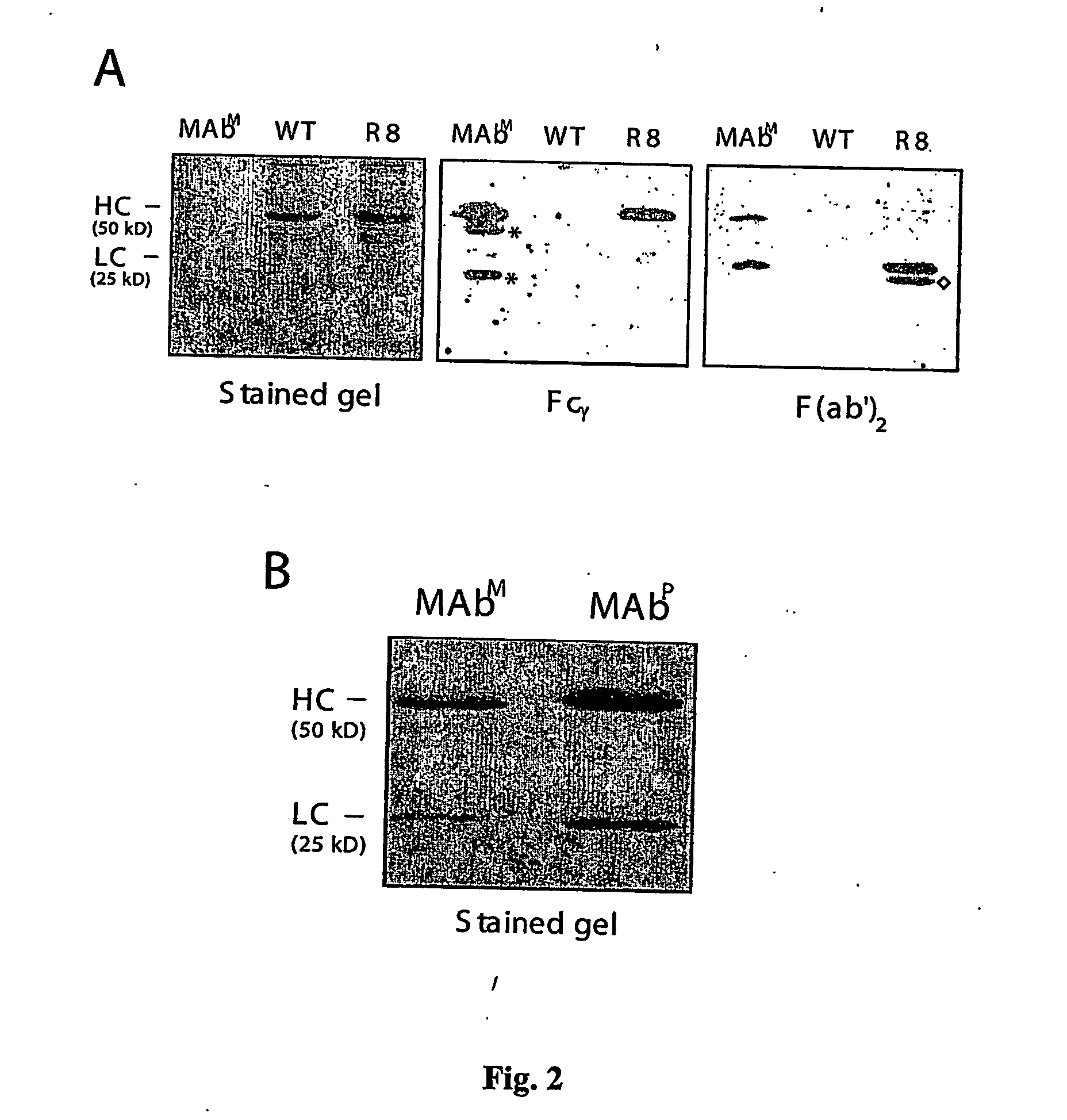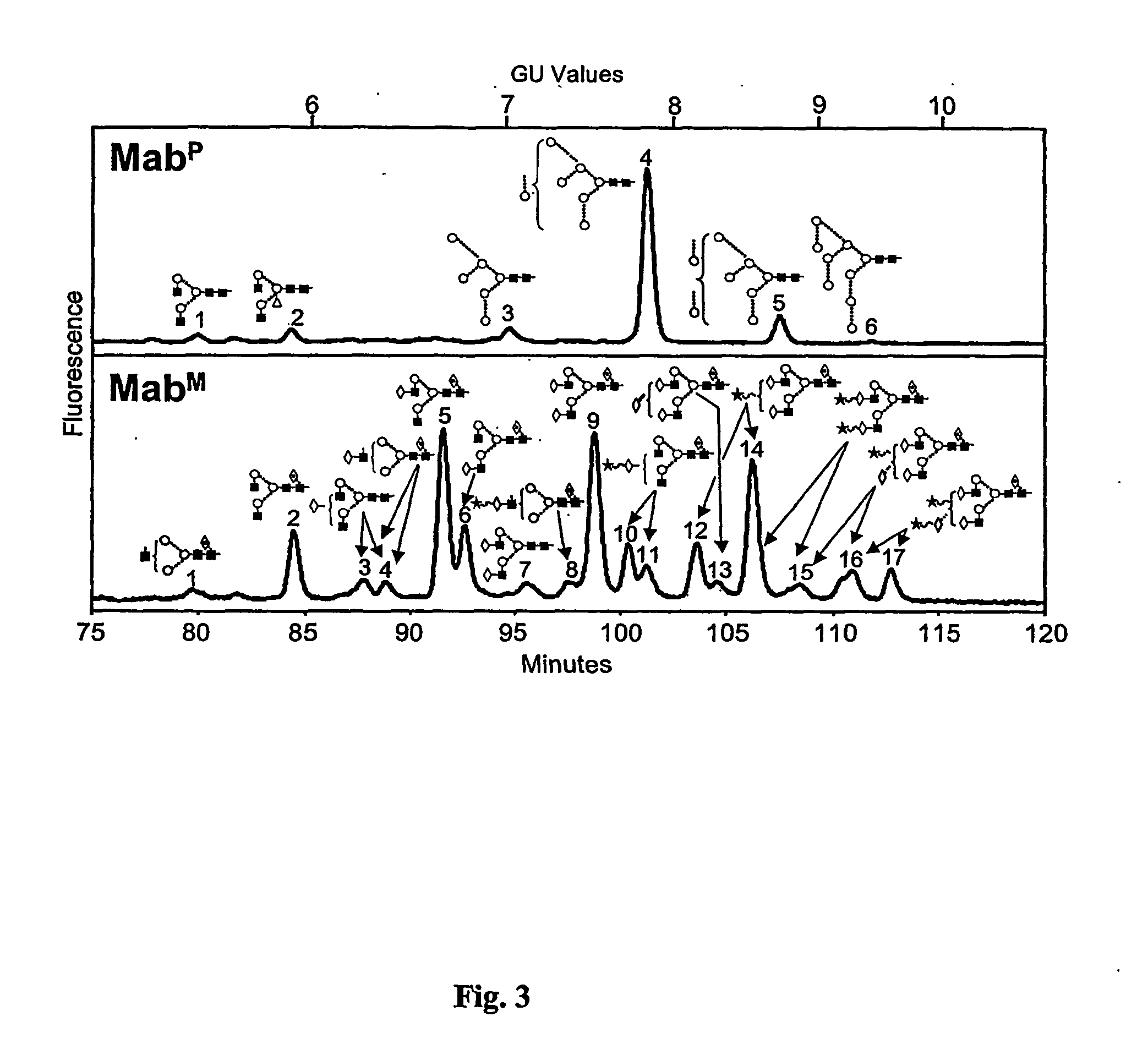Production of rabies antibodies in plants
a technology of rabies antibodies and plants, applied in the field of immunological compositions, can solve the problems of high cost of production and purification of synthetic peptides manufactured by chemical or fermentation-based processes, preventing their broad-scale use as therapeutics, and stability of antibodies
- Summary
- Abstract
- Description
- Claims
- Application Information
AI Technical Summary
Benefits of technology
Problems solved by technology
Method used
Image
Examples
example 1
Construction of Plant Transformation Binary Vector
[0153] cDNA fragments encoding for MAb S057 light chain (LC, 729 bp) (GenBank access #:AY172960) and heavy chain (HC, 1431 bp) (GenBank access #:AY172957) (Prosniak et al., J. Infectious Dis. In Press (2003)) were arranged into a pBI121 binary vector (Clonetech, Palo Alto, Calif.) as follows. The HC was amplified with primers containing NcoI and XbaI sites (5′-cgccatggactggacctggaggttc-3′(SEQ ID NO: 5) and: 5′-gctctagattagagctcatctttgtgat-ggtgatggtgatgtttacccggggacagggag-3′ (SEQ ID NO: 6), containing the KDEL ER retention signal)) and placed in-frame with the alfalfa mosaic virus untranslated leader sequence (AMV) of RNA4 (Datla et al. (1993) Plant Sci. 94:139-149, incorporated herein by reference) under the control of the cauliflower mosaic virus (CaMV) 35S promoter with duplicated upstream B domains (Ca2p) (Kay et al. (1987) Science 236:1299-1302, incorporated herein by reference) into the pUC9-based vector.
[0154] The LC was ampl...
example 2
Plant Transformation
[0156] Tobacco leaf explants (Nicotiana tabacum cv. Xanthi) were, used for Agrobacterium-mediated transformation (A. tumefaciens EHA105) in MS-based media (Hiatt et al. (1989) Nature 342:76-78) according to the described protocols (Ko et al. (2000) supra). Tobacco transgenic lines were generated by Agrobacterium-mediated plant transformation with a binary vector carrying both the heavy chain (HC) and light chain (LC) of human MAb S057 (FIG. 1). Independent transgenic lines were selected on kanamycin (100 μig / ml). Transgenic tobacco lines were later maintained in soil, and subsequent generations (T1 and T2) were obtained by self-fertilization.
example 3
Molecular Characterization of Transgenic Plants
[0157] PCR amplification of MAb S057 HC and LC was performed with genomic DNA of each transgenic line using the same primers as described above. PCR analysis of transgenic tobacco plants generated from independent transformation events revealed the presence of both HC and LC in seven transgenic lines (R5, R8, R9, R11, R12, R13 and R14) (FIG. 1B). Protein expression analysis by ELISA confirmed that human MAb S057 is expressed in the R5, R8, R9, R11, R12, R13 and R14 transgenic lines (FIG. 1C). Transgenic line R8 with the highest absorbance level (>0.35) was selected for further studies. Transgenic tobacco plant R8 did not differ morphologically from the wild type (WT) tobacco plant (FIG. 1D) and retained the same level of protein expression over several generations MAb S057 expression levels and assembly.
[0158] Transgenic plants were further analyzed by ELISA as follows. 96-well Nunc-Immuno™ MaxiSorp™ Surface plates (Nunc, Denmark) wer...
PUM
| Property | Measurement | Unit |
|---|---|---|
| Fraction | aaaaa | aaaaa |
| Electrical conductance | aaaaa | aaaaa |
Abstract
Description
Claims
Application Information
 Login to View More
Login to View More - R&D
- Intellectual Property
- Life Sciences
- Materials
- Tech Scout
- Unparalleled Data Quality
- Higher Quality Content
- 60% Fewer Hallucinations
Browse by: Latest US Patents, China's latest patents, Technical Efficacy Thesaurus, Application Domain, Technology Topic, Popular Technical Reports.
© 2025 PatSnap. All rights reserved.Legal|Privacy policy|Modern Slavery Act Transparency Statement|Sitemap|About US| Contact US: help@patsnap.com



